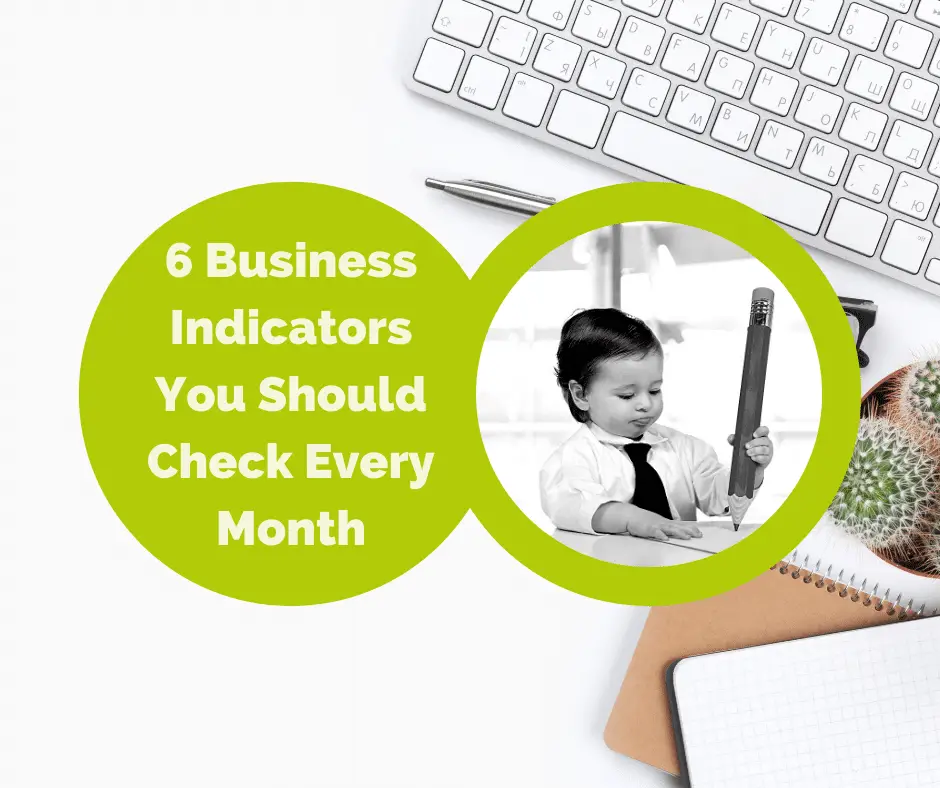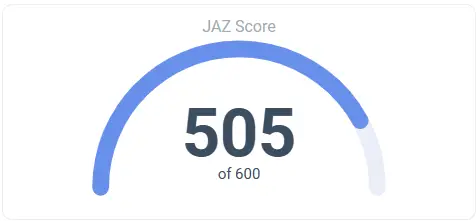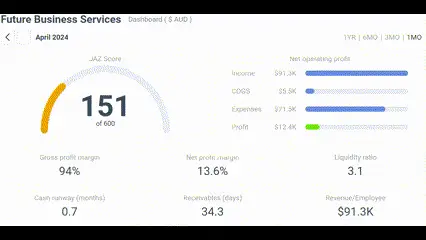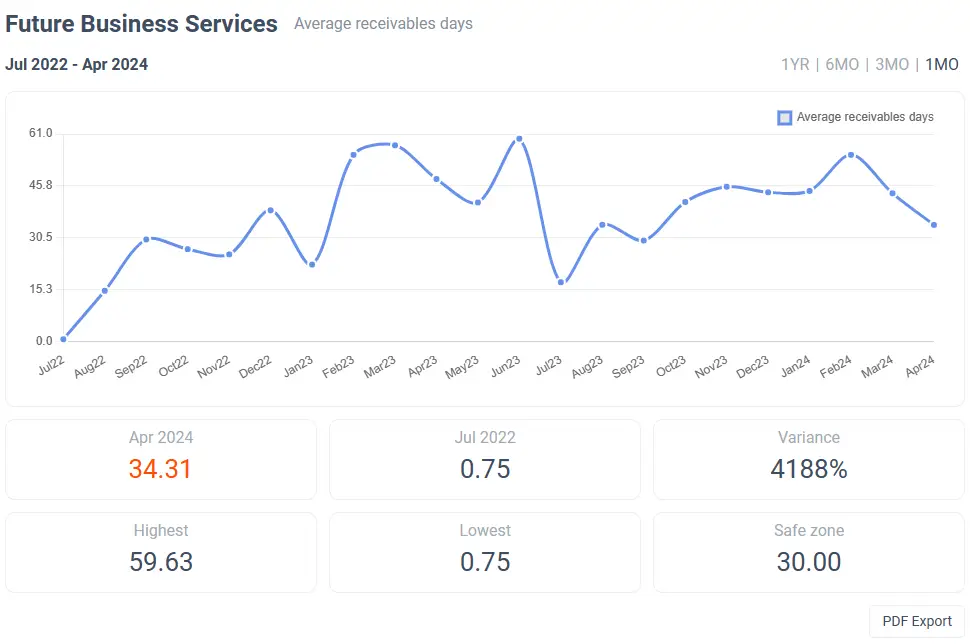6 Business Indicators You Should Check Every Month

If, like thousands of other business owners, you are at times unable to see the wood through the trees, there’s some little tricks that you can use to ensure your business is on track – and these will only take a few seconds each month. We recommend checking at least every month, after closing your month off – these 6 simple checks may give you time to react to them, plan your way from disaster or even spot opportunities early.
But There’s Great News
The great news is, every business owner has access to them, and if Xero, Quickbooks, or MYOB connected, can be updated in seconds within the Jazoodle application. So, whilst there are what seems an infinite number of things to keep your eye on within your business, here’s our tips for possibly the 6 most important:
- Your business health score
- Gross profit margin
- Expenses to profit relationship
- Debtor collection days
- Asset turnover
- Quick liquidity
Let’s take each in turn
1) Your Jazoodle Business Health Score

Never has there been one indicator that instantly tells you how healthy your business is, nor shows you, in advance, if there are underlying issues within your business. The Jazoodle business health score is a barometer between 0 and 600 and found on the right smack bang in the middle of your Jazoodle dashboard
Your aim is to be trading above 180 – below this and there may be underlying issues with revenues, assets, reserves, or working capital.
If you are in the red or orange zone, improve revenues, reduce costs, and build your asset base.
2) Your Gross Profit Margins

Check your gross profit margins monthly, and ensure a healthy zone and that they are consistent and not trending downwards. If your gross profit margins are reducing, this will be down to one (or more) factors such as discounting, or increasing cost of goods
3) Expenses To Profit Relationship
In Jazoodle, the indicator you want to look for is the expenses : EBITDA. EBITDA is in many respects, the true reflection of your profitability, and ignores some of your accounting choices, such as depreciation policies. If expenses in relation to profit starts to increase, there could be some opportunity to look further into your spending on general overheads. It also means that your overheads are rising faster than your revenues being generated – not a good sign of course
4) Debtor Collection Days

Your business routinely gives credit to your customers. If your customers are taking longer to pay you, this costs your business directly. The receivables period is critical in keeping your eye on. If increasing, it may hinder your ability to service your business, hinder growth, and pose financial risk within your business. Ensure that your overall debtor days periods are consistent with your client collections period. If you give your clients 7 days to pay and your receivables collection period is 20 days, then this needs addressing. Doing so, will bolster your bank balance and ensure you are on top of your business
5) Asset Turnover Period

Businesses employ a range of assets within the business, that are designed to generate revenues within that business. The Asset turnover ratio tells you how hard your assets are working for your business. We argue this is a key early indicator or profit and cash pressures within your business. The indicator basically says that for every dollar or pound invested in assets within the business, they generate x dollars or x pounds in return. Your aim is to ensure that the number is at least consistent every month if not growing. If it is reducing, then this could mean that your equipment or plant is not contributing adequately to the business. You may need to invest further in new equipment or plant, or employ existing assets more efficiently – get them working harder for you.
6) Quick Liquidity Ratio
We all know if you owe people more money than you have at hand. The quick liquidity ratio examines all the liquid resources you have at your disposal, such as cash, trade debtors for instance, and compares them to the monies that your business owes immediately, for instance trade debtors, credit cards and other short term borrowing. You should aim for a quick liquidity ratio of at least 1.0, 1.5 is much better of course. Lack of cash undermines businesses, lack of profit doesn’t in the short term. This measure will give you an indication of cash risk in the near term
Simple Isn’t It?
Running a business, can be fraught with so very many different indicators and conflicting signals. These 6 indicators are the starting point. You probably wouldn’t need to dig deeper if an indicator is going in the right direction, allowing you to concentrate on those indicators that aren’t.


